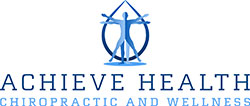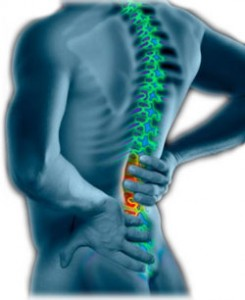Chiropractic A In Treating Neck and Low Back Pain!
For many years, the American Medical Association waged war against chiropractic, an intervention that relies on spinal adjustments to treat health problems. Chiropractors used to be regarded as the modern-day equivalent of snake-oil salesmen. The increasing acceptance of chiropractic care as a source of comprehensive complementary care for neuromusculoskeletal problems is reflected in that the chiropractic field is the fastest growing among all doctoral-level health professions.
Chiropractic: Then and Now
Chiropractors now represent the third largest segment of health care practitioners in the United States.
What led to the change in attitude toward chiropractic?
- Recognition by the established medical community that most medical therapies for back pain are ineffective.
- RAND’s 1992 groundbreaking analysis of spinal manipulation that showed this intervention does benefit some people with acute low-back pain. This study directly influenced the Agency for Healthcare Research and Quality to include positive recommendations on spinal manipulation in its 1994 clinical practice guidelines on low-back pain. This federal agency issues such guidelines to help the medical community improve the quality of health care in the United States.
View the print-friendly version: PDF (0.2 MB)
Chiropractic Research
Evidence For the Effectiveness of Chiropractic
If you suffer from chronic back or neck pain, don’t turn to medication, seek the help of chiropractic adjustments from a Champlin MN Chiropractor.
Numerous studies throughout the world have shown that chiropractic treatment, including manipulative therapy and spinal adjustment, is both safe and effective. Many other studies have shown that chiropractic care can contain costs and get workers back on the job after a work injury in less time than other treatments. The following are excerpts from a few of the studies:
For Acute Low-Back Problems
“For patients with acute low-back symptoms without radiculopathy, the scientific evidence suggests spinal manipulation is effective in reducing pain and perhaps speeding recovery within the first month of symptoms.” – Clinical Practice Guidelines, AHCPR (1994)
For Long-Term Low-Back Problems:
“There is strong evidence that manipulation is more effective than a placebo treatment for chronic low-back pain or than usual care by the general practitioner, bed rest, analgesics and massage.” – Spine, Van Tulder and Bouter et al. (1997)
“..Improvement in all patients at three years was about 29% more in those treated by chiropractors than in those treated by hospitals. The beneficial effect of chiropractic on pain was particularly clear.” – British Medical Journal, Meade et al. (1995)
“Manipulative therapy and physiotherapy are better than general practitioner and placebo treatment. Furthermore, manipulative therapy is slightly better than physiotherapy after 12 months.” – British Medical Journal, Koes et al. (1992)
For Pain:
“…patients suffering from back and/or neck pain experience chiropractic care as an effective means of resolving or ameliorating pain and functional impairments, thus reinforcing previous results showing the benefits of chiropractic treatment for back and neck pain.” – Journal of Manipulative and Physiological Therapeutics, Verhoef et al. (1997)
“…for the management of low-back pain, chiropractic care is the most effective treatment, and it should be fully integrated into the government’s health care system.” – The Magna Report (1993)
For Headaches:
“Cervical spine manipulation was associated with significant improvement in headache outcomes in trials involving patients with neck pain and/or neck dysfunction and headache.” – Duke Evidence Report, McCrory, Penzlen, Hasselblad, Gray (2001)
“The results of this study show that spinal manipulative therapy is an effective treatment for tension headaches… Four weeks after cessation of treatment… the patients who received spinal manipulative therapy experienced a sustained therapeutic benefit in all major outcomes in contrast to the patients that received amitriptyline therapy, who reverted to baseline values.” – Journal of Manipulative and Physiological Therapeutics, Boline et al. (1995)
For the Elderly:
“Elderly chiropractic users were less likely to have been hospitalized, less likely to have used a nursing home, more likely to report a better health status, more likely to exercise vigorously, and more likely to be mobile in the community. In addition, they were less likely to use prescription drugs.” – Topics in Clinical Chiropractic, Coulter et al. (1996)
For Containing Costs and Getting Workers Back on the Job:
“The overwhelming body of evidence” shows that chiropractic management of low-back pain is more cost effective than medical management, and that “many medical therapies of questionable validity or are clearly inadequate.” – The Magna Report (1993)
First contact chiropractic care for common low back conditions costs substantially less than traditional medical treatment and “deserves careful consideration” by managed care executives concerned with controlling health care spending. – Medical Care, Stano and Smith (1996)
The Impact of CAM on the Health Care System
With the advent of managed care and advances in biotechnology, the entry of unconventional therapies into dominant medical arenas had a marked impact on health care in the 1990s and was among the significant changes of that decade. The popularity of alternative and complementary medicine has affected every component of the health care system and all specialties of medicine, including oncology. It has influenced the thinking and practice of physicians and other health professionals and broadened patients’ involvement and influence in their own care.
Everyone Can Benefit From Chiropractic Care
There’s no doubt about it; chiropractic care is here to stay. A chiropractic adjustment can be performed on newborns, infants, children, expecting mothers, seniors, athletes, and even back surgery patients. Each adjustment is tailored to your size, age, particular health issue and sensitivity where pain is present. Adjustments are among the safest of all health care interventions because they are non-surgical, drug-free and present an extremely low risk. And they work!
If you suffer from chronic headaches, back or neck pain, don’t turn to medication, seek the help of chiropractic adjustments from a Champlin MN Chiropractor.



